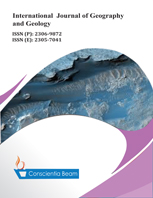Interdisciplinary Studies of Ancient and the Most Ancient Heritage Sites in the Geography of Culture
DOI:
https://doi.org/10.18488/journal.10/2017.6.3/10.3.40.47Abstract
Ancient and the most ancient heritage sites are revered landscapes or their components (rock sculptures, geoglyphs, sacred hills, trees, aquatic complexes and other objects of natural, anthropogenic and mixed origin), which are usually associated with folk traditions and legends. Authors of the article relate inclusion of such objects in the cultural landscape to prehistoric times (the Stone Age and earlier), and as the main primary function allocate astronomical orientation in space-time. The article shows examples of possible instrumental use of well-known and respected sites on the example of the earth's surface arched sculptures located in different regions of the world. As a result of studies carried out on the basis of maps, satellite images, photos, published descriptions, the authors conclude that most of the objects served as elements of information support systems, were included into the ancient local and regional navigation network and represent key parts of the organization of geo-cultural space, that was the objective basis of their sacralization.

